If you’ve always wanted to take an African safari, but thought it was too expensive or too difficult, I wrote this article for you. You don’t have to pay $5000 and go with an organized tour. In fact, a complete novice traveler can do a 10-day self-drive African safari in Kruger for only $670 plus airfare. And I’m going to tell you how.
Taking a safari in Africa is every wildlife watcher’s dream. Just take a look at these incredible National Parks in Africa and take your pick! Some of these are for the experienced travelers, and we recommend you start with an easy one. Kruger National Park is easily accessible and you don’t need a 4×4, so it’s the best one to get you started. A Kruger safari is the perfect first taste of future adventures.
The red sun begins to set over the acacias as three giraffe silhouettes amble by, rimmed with blazing gold. A hippo and her tiny baby are snorting mist into the warm air from the center of the waterhole as a herd of elephant approaches for a drink. Crowds of zebras and impalas watch closely from the opposite shore near a basking crocodile. Fish eagles are calling from the sky when suddenly a troop of baboons begins to squeal and bark, alerting everyone that a large predator is approaching.
That’s when you hear it, the deep bass rumble that reverberates through your chest cavity: your very first African lion roar. You will never be the same after taking your first African safari.
This article was updated on August 2018 with current prices and US exchange rates.
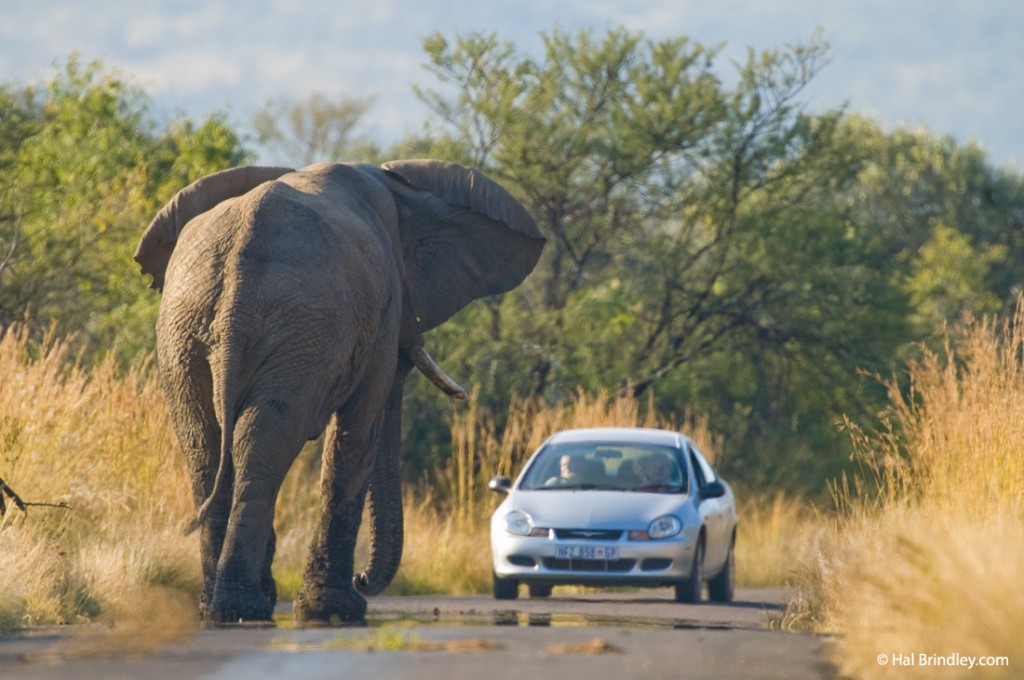
*This article may contain affiliate links. We receive a small commission at no extra cost to you.*
Table of Contents
Where To Go
Having set foot in seven countries in Southern Africa on seven different trips, I can say without hesitation that Kruger National Park in South Africa is the perfect place to go for a first-time visitor to Africa. It’s where I went the first time I landed in Africa and within four days I saw a leopard attacking a crocodile, something never before documented (watch video). Kruger’s only downside is that, because of its immense popularity, it can seem overcrowded at times. But this is easy enough to avoid with our tips in The Art of Escaping the Crowds in Kruger, and stay at satellite campgrounds like Tsendze Rustic Camp. There are a million amazing things to see in this park each day, and that is only the first reason why Kruger is the best choice for your first self-guided wildlife safari in Africa. Here are the rest.
Why Kruger Is the Best Place For a Self-Guided African Safari
- Diversity of Species: Kruger has the largest diversity of large mammal species anywhere in Southern Africa including several rare, endangered carnivores such as Cheetahs and African Painted Dogs (aka Wild Dogs). (See List of Mammals We Spotted in Kruger in one week) Add to that roughly 500 species of birds, including a generous 58 species of raptors, and of course, the world’s largest bird, the Ostrich. To top it off, you can see a wide array of South African owls, reptiles and amphibians from the massive Nile Crocodile, to the beautiful flap-necked Chameleon. You will be able to see virtually every one of your dream African animals in Kruger (With the notable exception of great apes like gorillas and chimps, though there is the chimp sanctuary Chimp Eden -Jane Goodall Institute- in Nelspruit which you will pass on your way to Kruger)

- Ease of Access: Johannesburg Airport is generally the cheapest place to fly to in all of Southern Africa, and Kruger National Park is less than a five-hour drive away along a single well-maintained highway, easily accessed by rental car.
- Great Facilities: South African national parks have some of the greatest facilities anywhere in the world. The expansive network of paved and gravel roads are meticulously maintained. Each of the large rest camps has a shop for groceries and supplies, an ATM, a restaurant and a gas station. The campgrounds have public cooking facilities with electric stoves and excellent restrooms.
- No Language Barrier for English Speakers: Everyone in South Africa speaks English to some degree. You will have no trouble getting things done.
- Price: South African national parks are reasonably priced compared to those in some nearby countries such as Botswana and Namibia, especially if you purchase a Wild Card (more about that later.)
- Size: Although parks in South Africa are fenced in, Kruger is so large that you would never know it. Covering an area about the size of the state of New Jersey, Kruger encompasses a wide range of habitats and species. Head off onto a back road and you might not see another human being for hours.
Questions and Answers
How much does a Kruger Safari cost?
Note: all prices in this article, when translated from South African Rand into US dollars, use a conversion rate of R1 = $0.069US (August 2018 exchange rate).
Based on our actual expenses this August (2018), you can take a 10 day safari in Africa for only $700 per person plus airfare to Johannesburg
This price is calculated based on two people traveling together (in the same car, sleeping in the same bed). This 10-day Kruger trip includes a 10-day compact car rental, gas, one night in a guest house on the way to the park, two nights in chalets in the park, seven nights camping, all food and drink including groceries and several dinners in restaurants, two night drives, all park fees, plus a little extra for assorted expenses. Here’s the break down in actual costs for two people.
(scroll table side to side to see all columns)
| Item | Cost (Rands) | Cost (US$) | Notes |
|---|---|---|---|
| Car Rental | 4140 | 289 | R414/day (insurance and camping gear included-rate based on a 3 week rental) |
| Gas | 1780 | 124 | 130 liters |
| Wild Card | 3830 | 266 | couple (International all parks cluster) |
| Camping | 1016 | 141 | 7 nights (priced based on camping at Satara rest camp on a non-electric site) |
| Bungalow | 2936 | 206 | 2 nights (price based for Satara rest camp) |
| Guest House | 690 | 48 | 1 night |
| 2 Night Drives | 972 | 64 | R243/person (price based for night drives offered at Satara rest camp) |
| Food & Drink | 1800 | 125 | |
| Asst | 1000 | 70 | |
| TOTAL | R18550 | $1333 | For 2 people |
As you can see, adding nights in chalets at about $109 per night will quickly add to the total cost of your trip. Whereas camping, at about 20 bucks a night, is a much smarter way to go, and will bring you closer to the animals and nature you came to experience.
Here is a list of all types of accommodation in Satara.
When Should I Go?
If you’re a first-timer, I would recommend going near the end of the dry season. Though the colors can be drab and brown, the wildlife is more concentrated around water sources and animals are easier to see due to the general lack of vegetation. Dry season lasts from May to October and I have had great luck in September. However, any time of year offers something interesting. Summer (October to March) is the rainy season and brings great numbers of migrating birds. Also, many species of large herbivores drop their young. It is a great time to see baby zebras, giraffes, etc. And though the vegetation becomes thick, the lush green colors make a much nicer backdrop for photos.
Is it safe to travel in South Africa?
We’ve never felt in danger outside of the cities in South Africa. We avoid Johannesburg entirely. But even out in the country you must be sensible. Theft does occur. I’ve had my car broken into in a hotel parking lot in South Africa (in St. Lucia) because I was stupid and left valuables sitting in the back seat. Keep an eye on your goods or keep them hidden in the trunk and bring them inside at night. I’ve never had a problem in Kruger and feel quite safe there, but on the way to and from the park, use common sense like you would in your own country. And don’t forget to read our post on Safety in South Africa for all the ins and outs of staying safe during your trip to South Africa.
Buy your travel insurance: Keep yourself covered. Always.
Are the animals dangerous? Yes. There are many species in Kruger that can kill you. But if you follow one basic rule, you’ll be fine. Stay In Your Car. If an elephant confronts you on the road, put it in reverse and back up slowly. Anybody else, you can simply roll up your windows and you’re OK. Don’t ever feed an animal. Stay away from baboons in the campgrounds and keep your food well contained in your vehicle. Baboons can be a nuisance but treat them with respect like any wild animal and you’ll be fine. Sure there are dangerous animals in South African game parks, but that’s the whole point of going isn’t it?
Poaching in Kruger National Park, What you Need to Know
Rhino poaching and elephant poaching are a real problem in Kruger and tourists have occasionally encountered poachers while driving along the Kruger roads. Never EVER talk to a suspected poacher. If you see something suspicious and you believe the people involved are indeed poachers (people walking into the bush with guns, or other weird behavior) take a photo if you can (make sure it is safe for you to do so), if you can get the license plate even better. Get anything that can be used to identify these individuals. ONLY if it is safe for you! Do it and get out of there. Fast. Find mobile phone reception and call 0800 205 005 or 08600 10111, or drive to a rest camp and report them.
Do NOT engage with poachers. They are dangerous and they are probably heavily armed. They won’t think twice about using them to protect themselves.
To report a poaching incident in Kruger (or suspected activity), you can use the following numbers: 0800 205 005 or 08600 10111
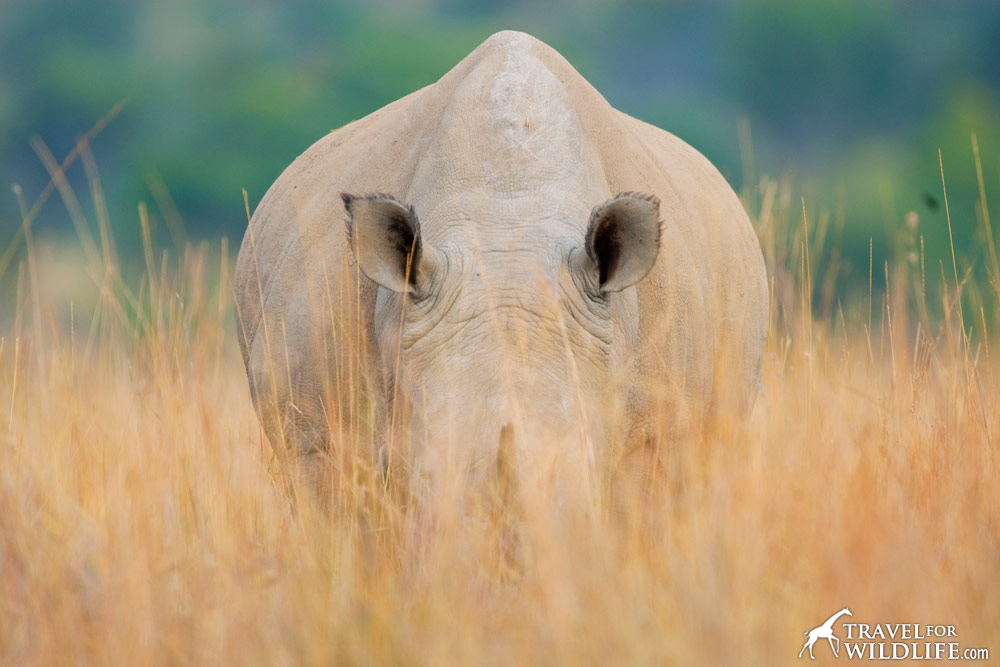
What Should I Bring on My African Safari?
- Binoculars. You don’t need huge binoculars with massive magnification. We carry smaller models with 8x magnification and they serve us well.
- Camping Gear. If you have it, bring it. If you don’t, you can rent it with your car at some places (see ‘rent a car’ below in the step-by-step). We usually bring a tent with rain fly, inflatable sleeping pads and sleeping bags. We often buy a couple cheap pillows and sheets at a bedding shop in the town of Malelane on the way in. You can also buy most camping supplies at the shops in the rest camps in Kruger. Of course if you plan to stay in chalets the whole time, then camping gear isn’t necessary. But even so, it can provide you with a backup lodging plan if chalets are full and you haven’t booked ahead.
- Cooking Gear. Bring a compact camping pot set and some basic utensils. We use the GSI Pinnacle Camper set which comes with plates too. Campgrounds have public stoves (see photo) so you don’t really need to bring your portable camp stove. Again, most items can be purchased at camp stores if you need them.

- A Jacket. It can get cold in the evenings, especially on night drives. I prefer to use my regular tops with a lightweight windbreak/waterproof one like this one from Mountain Hardwear. You can get the same one from Amazon here. For ladies I suggest this one also from Mountain Hardwear, or get it here on Amazon.
- A Car Power Converter. I always bring a power converter, the kind you plug into your car’s cigarette lighter, to charge camera batteries while I’m driving. Instead of getting a DC adapter for each of my electronics, I just use a converter that changes DC to AC (with a regular household plug) and use my regular chargers. I like this one as it has two outlets so we can charge more batteries, phones, laptops …
- A Bean Bag. If you’re a photographer, you will do almost all your shooting through a car window. If you need to save space and weight, forget the tripod. Instead, bring an empty bean bag and fill it with rice when you arrive. Plop it on your window sill and shoot away.
How to Take Your First African Safari to Kruger, a Step by Step Guide
1) Fly to South Africa
Johannesburg is consistently the cheapest place to fly to in southern Africa. If you’re an American like me, you can expect to pay somewhere between $1000 and $1500 from major east coast cities. On our most recent trip we had a direct flight from Atlanta to Johannesburg (16 hours!) on Delta for around $1300 (keep an eye out for deals! we have found flights for $700). My first three visits followed a different route with a 12-hour layover in London. The direct flight had the disadvantage of arriving late in the afternoon, making it impossible to drive all the way to Kruger on our first day. Flying via London gets you into Johannesburg early enough to drive all the way to the park as soon as you land.
2) Get Some Cash Out of the ATM
When you arrive in Jo’burg and clear customs, the first thing I recommend you do is get to an ATM. There are several inside the airport which is large and modern and bustling. A few people may try to offer you rides and services as you enter the main lobby. Politely decline and then find an ATM. Use your regular ATM card from home (if it has a VISA logo on it, you should have no problems) and get out some Rands, the local currency. The bills feature a variety of wildlife species to get you excited for your safari. I usually get about 1000 Rand, which at the time of writing is about $120 dollars. This should be enough to cover any expenses between the airport and Kruger, including a potential stay at a guest house if you don’t make it all the way to the park. It’s not a good idea to start your drive without cash because you will have to pay some highway tolls along the way.
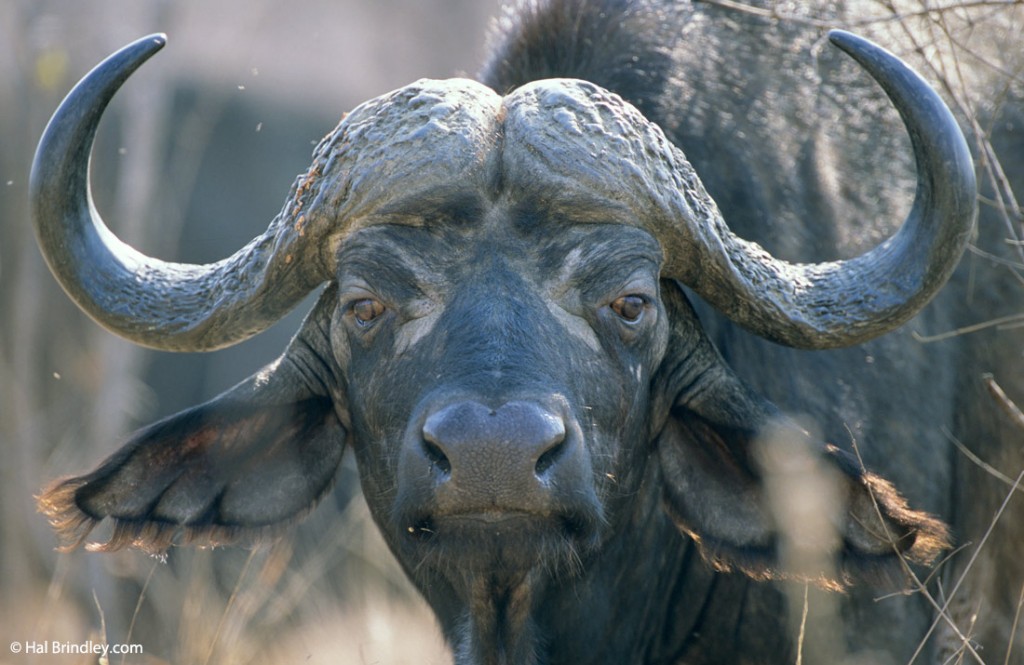
2) Get a Rental Car at Johannesburg Airport
You don’t need to have a Land Rover or a pickup truck with a rooftop tent to go on an African safari. In fact you can drive a sub-compact rental car that gets excellent gas mileage, and this is exactly what I recommend you do. The way to see wildlife in Kruger is by driving around so you have to rent a car. Pick one up at the Johannesburg airport from any of the major car rental companies.
The roads in Kruger are easy, so don’t worry about 4-wheel-drive or high ground clearance. If you think you’ll want a little more space, make sure you get a car with four doors and a trunk, which is handy for hiding your luggage, and a large backseat is nice when you both want to be on the same side of the car to photograph a sighting. On our recent trip, Cristina and I rented the cheapest model available (a Hyundai i10) and lived in it for six weeks. It was tiny but the fuel efficiency (nearly 40 mpg) saved us about $800 compared to what we would have spent for gas in a large pickup. At over $5 per gallon, saving on fuel is a great way to reduce the cost of your safari. Remember, in South Africa fuel is measured in liters so an average fuel cost in Kruger at time of writing was about 11.30 Rands/liter.
Be sure to get air conditioning, especially if you visit during the summer. This is one luxury that will improve your life when you are spending up to 12 hours a day in your car. We spent about $25 a day on our car for six weeks but expect to pay slightly more for shorter periods. If you’re not bringing camping gear with you, consider renting it along with your car from one of the smaller local car rental companies such as Tony’s Car Hire. I rented from them on my first two visits and was very pleased. Be sure to book your car rental in advance via the internet to insure availability.
When renting from a major company (find your rental car here), I skip the additional insurance coverage because it doesn’t cover the usual damages anyway (like chipped windshields, flattened rims and undercarriage damage.) If you’re not a gambling man, go ahead and get the extra coverage. After all, an elephant could sit on your car (I don’t think this is covered, by the way). And, if you’re American like me, you will be driving on the other side of the road (see “Drive to Kruger” below).
3) Pick Up a South Africa Map
Your rental car company will give you a basic map, but if you haven’t already found a decent road map at your bookstore back home, I recommend stopping at the gas station in the airport on your way out (called a Petrol station in South Africa) to buy a good one. You will see signs for the Engen Sky Stop as you leave the rental car area. They sell a great tourist map of South Africa that is in atlas format (a book), which includes an excellent map of Kruger and is well worth the ten bucks. It’s also much easier to handle while driving than a big foldout map. This is also a great opportunity to pick up a drink and a bag of H.S. Balls chutney flavored Simba potato chips (my favorite junk food in South Africa.) If you’re the kind of person who likes to see where you’re going ahead of time, here is the Engen station on google street view! You can practice driving yourself out of the airport right here.
4) Drive to Kruger National Park
The first thing you’ll notice, if you’re an American, is that the steering wheel is on the wrong side of the car. Don’t panic. You can do this. My first time ever driving on the left side of the road was right here in the Johannesburg airport. Just keep repeating the mantra “stay left, stay left, stay left” as you drive. As long as there are other cars around to provide visual clues, it’s not so hard. The bad news is, the gearshift is now under your left hand. The good news is that the pedals are in the same arrangement that you’re used to. You’ll get the hang of it quickly but if you’re like me, you’ll never quite get used to where the turn signals are and you’ll turn on the windshield wipers over and over.
Coming out of the gas station, follow signs for R21 South to Boksburg. After a few kilometers you will turn left onto the N12 toward Witbank. Now you’re home free. Drive for about five hours, a total distance of about 390 kilometers (240 miles). After about 100km (in Witbank) the highway will merge into the N4 and take you all the way to Kruger.
You’ll probably be able to get all the way to Kruger on one tank of gas but if you’re getting low, stop at one of the Petro-Ports on the highway. These can be crowded with people so keep an eye on the stuff in your car. Hide it and lock your car doors at all times. Highway tip: South Africans have a peculiar highway habit. When the road has an emergency lane on the shoulder, the custom is for slow vehicles to pull into it, allowing faster vehicles to pass (unless it is a multi-lane highway of course.) If you are one of the slow drivers, give it a try. You will get a blink from the tail lights as a thank-you from the driver who passed you. The estimated drive time between the airport and Malelane Gate in Kruger is 4 hours and 45 minutes.
5) Find a Place to Stay
You’ll be entering Kruger from the southern end at the Malelane Gate just past the small town of Malelane. The rest camps are surrounded by fences within the park and the gates to enter them close around 6PM (the time changes slightly at different times of the year: 5:30 at the earliest and 6:30 at the latest). If you can’t make it to a rest camp before then, you won’t be allowed to enter the park.
The nearest camp inside the park is Berg-En-Dal and it is only a few kilometers inside the park. However, if you get to the Malelane gate much past 5:30, you probably won’t get in. We also don’t recommend you drive after dark. There are plenty of cute little guesthouses around in the nearby village for reasonable rates (approximately $30-40 US for two people) and they are a great place to rest up after your long flight and long drive and to get psyched up about all the great animals you’re going to see the following morning.
If your flight into Jo’burg arrived too late to get very far, find a guesthouse along the way. They are found in villages and also along open stretches of highway. You can find small signs along the road indicating where guesthouses and B&B’s are hiding. Or be on the safe side, plan ahead and book your accommodation in advance. The town of Nelspruit is a good stop over just before Kruger. Find Nelspruit accommodation here.
6) Get Food & Supplies
You can stop in the small town of Malelane and visit the grocery store where food is a bit cheaper than inside the park, though you may feel a little overwhelmed by the traffic and crowds of people. Again, try not to leave bags visible in the car. Petty theft does happen. If someone in the parking lot offers to watch your car, say OK and give him a few coins when you come back out to your car. It’s a cheap price to pay for this service. This is a nice little town and fairly easy compared to many of the hectic small towns in South Africa, and worth the bit of adventure. If you’re not up for it, don’t fret.
You can also buy food at every rest camp in Kruger and you can eat at the restaurants when you’re feeling lazy. There is also an Engen station here in Malelane so you can fill up before entering the park. Again, no worries, there are fuel stations at every camp in the park.
7) Enter the Park
Pay entry fee: As a visitor to any national park in South Africa you must pay a daily park entrance fee (called a conservation fee). The rate for foreign visitors is currently R192 per person per day (kids are cheaper). That comes out to about $25 per person per day! This might sound a bit outrageous, especially considering the cost for South African citizens is only about $6 per day, but there is a way to beat the system: The Wild Card. Essentially a national parks pass, the Wild Card allows you free access to any park in the country for one year. Though there are several different levels of the pass available to locals, as an international visitor your only choice is the “International All Parks Cluster” which, at the time of updating the article (August 2018), was priced as follows:
| Currency | Individual | Couple | Family (7 max) |
|---|---|---|---|
| In Rands | R 2,450 | R 3,830 | R 4,585 |
| In US $ (est.) | $170 | $266 | $319 |
(for current pricing visit Sanparks ) For a couple like us, the wild card pays for itself in five days. From there on out, your entry fee is free, free, free. To buy a wild card, simply inform the employee at the park entrance gate that you intend to buy one and they will instruct you to go to reception at your first camp to pay for it. If you’re spending less than five nights in the park, don’t bother with the wild card and just pay your “conservation fee” right here at the entry gate.
Reserve lodging: You’ll also have to inform the people at the entry gate where you intend to stay during your visit. If you’re on a tight budget, camping is the way to go. If you have a little more room in your lodging budget, reserve a few nights in a chalet at some of your camps.
But either way, you’ll have to decide which camps you want to stay in and for how many nights. That means you have to make a few decisions ahead of time (see next step). We never reserve our Kruger lodging before arriving at the entry gate. We simply show up, look at a map, make up a plan, and inform the person behind the counter. They let us know if camping is available those nights for each of our desired camps. If it’s not, we modify our route. We usually reserve a camp site for each night and then later, when checking in at various camps, we’ll sometimes inquire whether they have a chalet available for that night.
That way, when we feel we could use a night indoors, we give it a shot. Be warned, you will often get a dirty look from the employees if you haven’t booked ahead. But we can live with that. Of course you could reserve all your Kruger lodging ahead of time if you don’t want to take any chances. You can book online or by phone but we find it’s hardly necessary unless we have bad luck and show up during a busy public holiday.
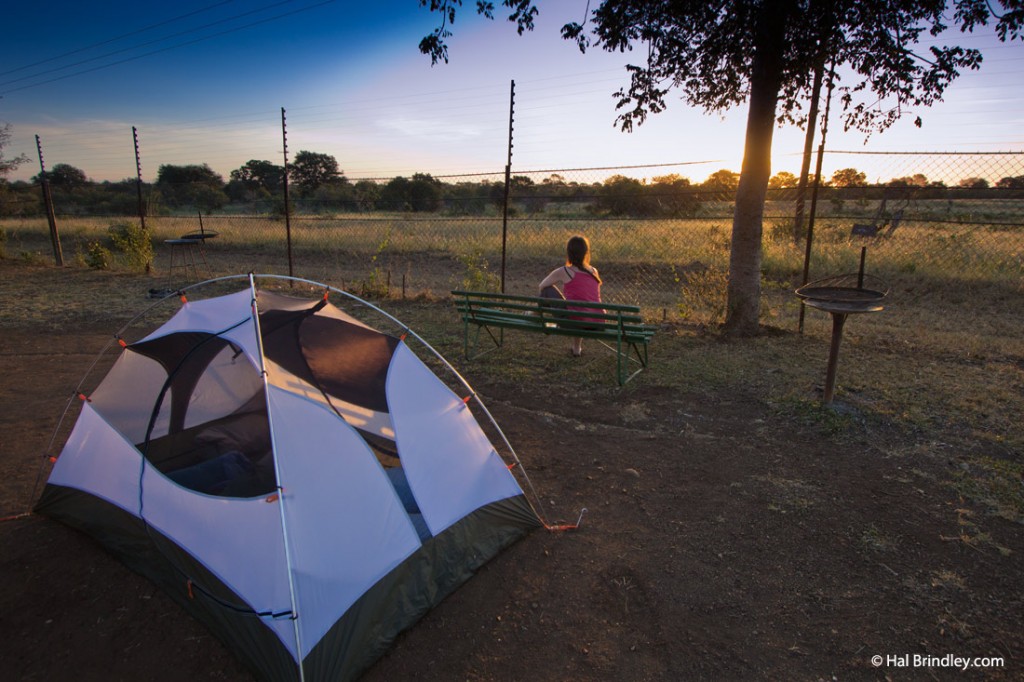
8) Choose Your Camps
Don’t stress too much about this one. You can’t really choose a bad camp in Kruger. Generally I like to spend two nights at a camp and then move on to another so as to experience a variety of habitats and therefore a wider range of species. If you don’t mind packing up camp and setting up again every day, then go wild and stay at a different camp every night, spending each day traveling slowly between one and the next. The average visitor will probably spend 7-10 days in Kruger.
But keep in mind; this is a BIG park. During a seven-day visit, it is impractical to try to get all the way to the north end of the park and all the way back down again. Technically it is possible, but you will spend all your days driving quickly, which means you will have very few sightings. Instead, either make a loop up to the center and back down again, or travel one-way through the park and exit out of the north (keeping in mind this will give you a much longer drive back to the airport).
One of our new favorite campsites is Tsendze camp, a satellite camp of the larger camp Mopani. It is small and intimate, a real bush experience. This is not like the other bigger, noisiest ones, so if you stay here, please be mindful of the other campers and enjoy the silence!
Our other favorite camps are in the north section of the park. Letaba rest camp and Punda Maria rest camp are two of them. Tamboti tented camp is our choice if we enter the park through the Orpen Gate.
If you feel like splurging (you will go way over the $700 budget, stay at one of the safari lodges in Kruger National Park.
Suggested Itineraries:
For a 7 day visit, I like to stick to the lower third, even thought this is the busiest area. There are high concentrations of game in the south end of the park and you can see nearly every one of Kruger’s species here. This is one of my personal favorite itineraries. (If you need to drop a day then skip Skukuza; it is too big and the camp ground is kind of lame.) View the official Kruger Park Map to get a sense of where these camps are.
- Night 1: Berg-en-Dal
- Night 2: Skukuza
- Night 3 and 4: Satara
- Night 5 and 6: Lower Sabie
- Night 7: Crocodile Bridge
9) Find Animals!
Here are a couple quick tips for finding wildlife on your first safari in Kruger.
- Get Up Early. Get in your car and leave the camps at gate opening time. Some try to be first in line to catch whoever is sleeping on or next to the road. Many animals, like hyenas are only active in early morning or late evening and you may not get a chance to see them otherwise.
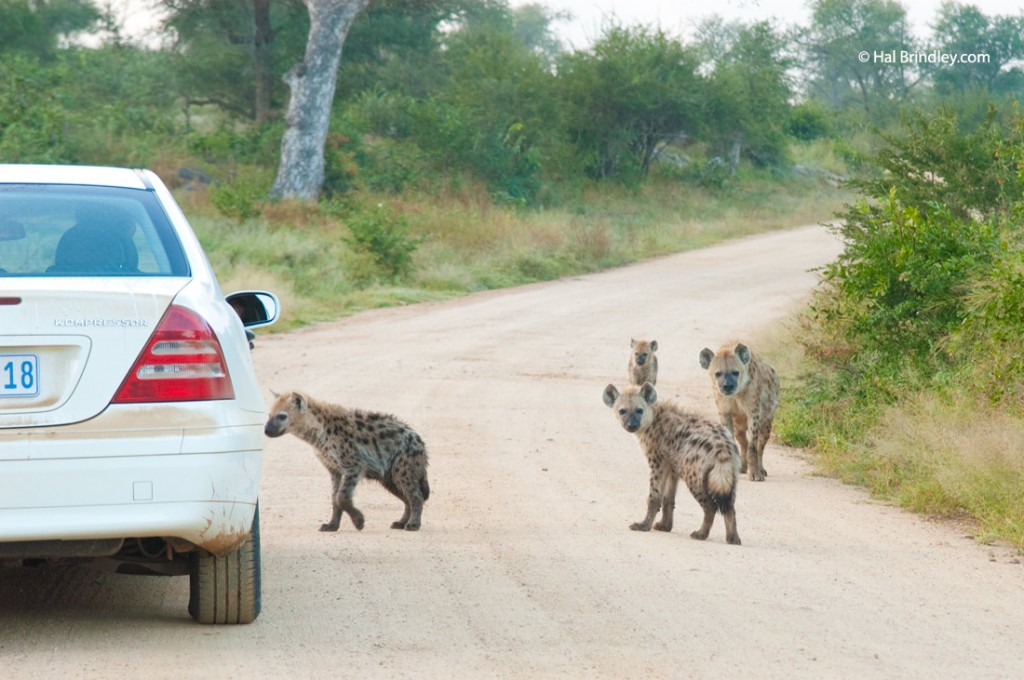
- Drive. Get out there and drive. You’ve got to put in the hours. We usually stay out all day long, from gate open to gate close, and stop at a picnic area mid day for lunch. This may sound obvious but it’s true. The more time you spend out looking the more you will find.
- Go Slow. You don’t have to cover a lot of distance to see animals. They are everywhere, and people who drive fast do not see them (unless the animals happen to be sitting in the road.) Also, it is dangerous for the animals when you speed. Be one of the good guys, slow down.
- Talk to People. Don’t be shy about asking the folks around you what they’ve seen and where. If a person has pulled over and is looking at something, it’s OK to ask them politely what they see.
- Check the Sighting Boards. Each camp has a sighting board where visitors can put a small colored magnet on the map to indicate where they’ve seen a certain species that day. If you come back to camp at midday, check out the mornings sightings and see if you can find them.
- Watch for Traffic Jams. This is kind of the lazy way to do it but it is also a surefire way to see large predators. If there is a traffic jam with more than five cars, there is most likely a lion. Or if you’re lucky, a leopard. But sitting at a traffic jam sighting can be annoying so take a look and move on. On the other hand, most people have short attention spans so if you stick around, you may end up being the last one there and have the sighting to yourself.
- Sit and Wait. If you sit at a waterhole in morning or evening, you have a great chance of seeing interesting creatures coming and going. This technique requires patience, something which I don’t generally have. But when I do have perseverance, I am often well rewarded.
- Scan Constantly. You can’t just watch the road. Yes it can get tiring scanning the trees and grasses all day, and your neck can get a bit sore, but the fact is, when you stop looking, you stop seeing.
- Go On a Night Drive. This is the only way to see many of the species in Kruger, read more below in “when to splurge”.
- Campgrounds. You’ll find lots of interesting little creatures around the campgrounds from birds to reptiles to small mammals to invertebrates. Keep your eyes peeled. And if you’re not going out for a night drive, trying wandering around the campground in the evening with your headlamp on. You might catch some bushbabies! Some animals, like jackals and hyenas, wander around the fences looking for handouts at sunset. It’s a good opportunity to view them but you must NEVER feed them (see “What Not To Do” section below)
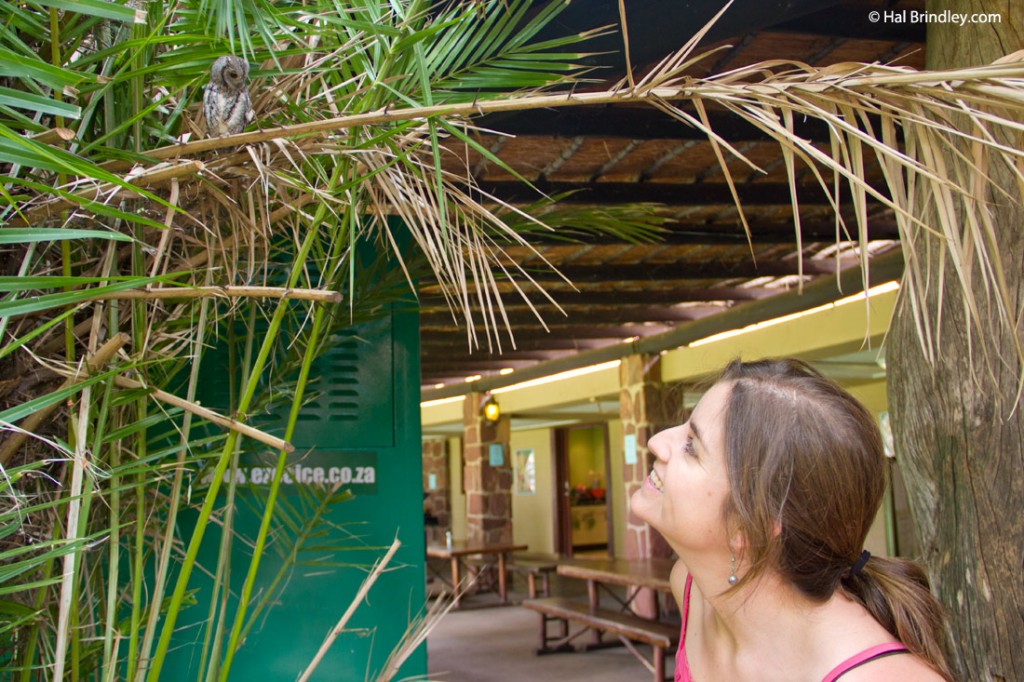
When To Splurge While on a Kruger Safari
Night Drives: If you have a little extra cash to spend, this is definitely where I recommend you put it: into guided night drives. You can’t drive around on your own after the camps close at sunset, so this is the only way you are going to witness the other half of the animals that live in Kruger: the nocturnal ones. Each camp offers guided night drives. Some offer both a sunset drive (which departs before camp closes and lasts ’til a bit after sunset) and a night drive (which starts when it is dark).
Night drives generally cost about $20 per person in Kruger, which is really not a bad deal considering how many species you will add to your sighting list. The coolest part about night drives, in my opinion, is getting to control the spotlights. Spotlighting is like having magic vision that can detect eyes in pitch blackness. Nocturnal animals have a highly reflective layer at the back of their eyes which glows brightly in a spotlight. If an animal looks at you, no matter how tiny it is, you will see it (even spiders!) From bouncing bushbabies to hunting owls, this is an extra expense worth investing in.
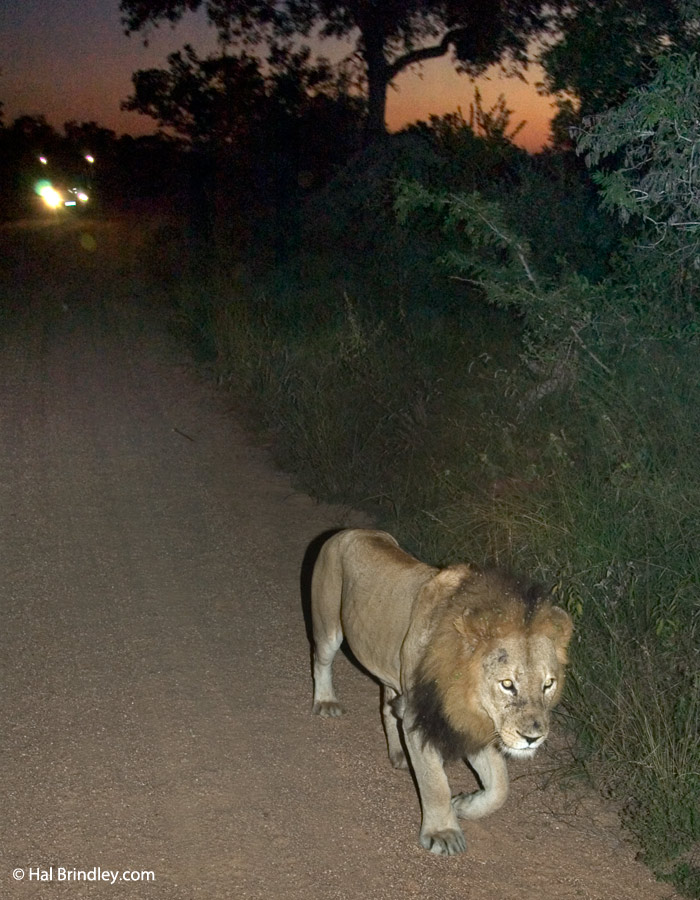
Chalets: After a few days in tents, you may find yourself in the mood for a cozy bed, a kitchen to cook in, and a private bathroom. We usually spend one night in a chalet to give ourselves a treat. Each campground has nice accommodations to choose from and you don’t have to book them in advance. If we’re in the mood for a chalet, we just go to the check-in desk when we arrive at a camp and ask if any chalets are available. If there is one, they will just charge the extra amount owed above the camping fee. Each chalet I’ve stayed in has been very clean, beautifully maintained, and pretty darn cute. The covered outdoor kitchen and dining area are my favorite. And being able to refrigerate your drinks is pretty nice too.
Restaurants: Every camp has a restaurant and I highly recommend you eat at a couple different ones. Not only is it a great treat after living off peanut butter sandwiches in the car all day, but the atmosphere is lovely and the food is generally quite good. Plus you’ll get to try a variety of local game (if you don’t mind eating the very animals you’ve come to see.)
And of course if you are on on a budget, you get to splurge every day! Invest on a fancy lodge for one or more nights and enjoy a luxury African safari. If you have time to go all the way to the north of the park, we recommend The Outpost. We were lucky enough to spend a couple of nights there, you can read our review here.
What NOT To Do While on an African Safari or Safari Etiquette
Get Out of Your Car. This is the biggest no-no you can do in Kruger. Stay in Your Car! People do get killed by lions and leopards. If it doesn’t specifically say “you may alight from your vehicle here”, don’t do it.
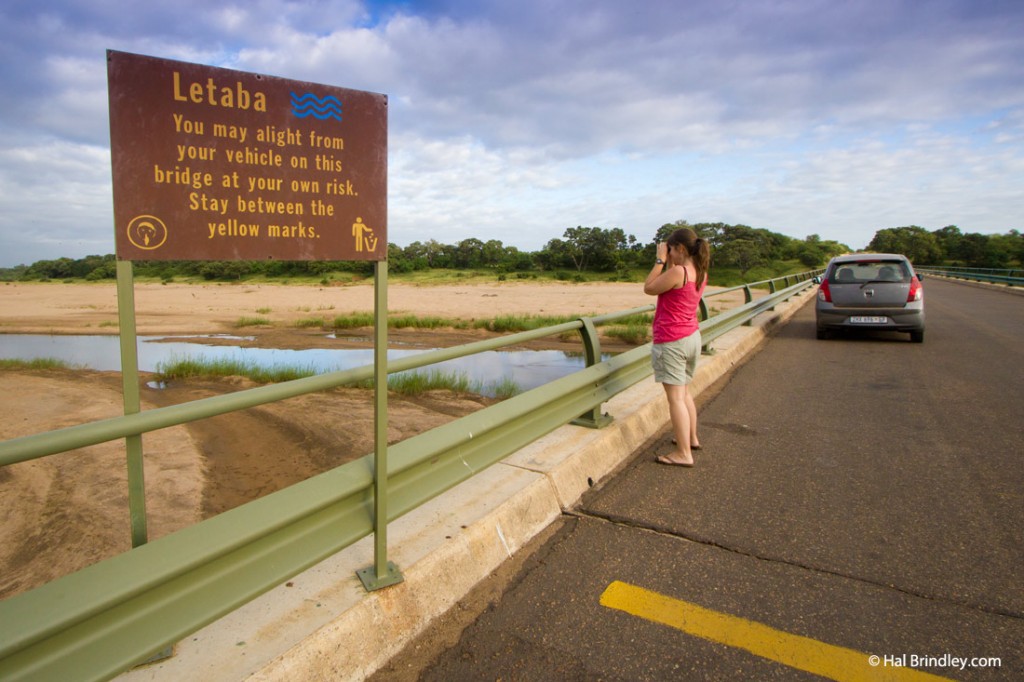
Lean Out of Your Car. This is slightly less for your own protection than it is for ruining the experience of everyone else. Animals are habituated to cars. They are not habituated to people and that’s the way it should stay. If you lean out of your window, you become a person and you scare the sighting. This obviously goes for climbing onto the roof of your vehicle too. If you want to look like a stupid tourist and pay a big fine and get thrown out of the park, then climb onto your vehicle!
Feed The Animals. Never, ever, ever, under any circumstances, feed an animal in Kruger. From the biggest elephant to the tiniest bird or squirrel. A fed animal loses its fear of people, becomes a “problem animal”, and then has to be killed by park rangers. You are not helping an animal by feeding it. You are killing it. You are not being generous. You are selfishly condemning an animal to death for your own entertainment. Human food is not good for animals.
If an animal starts to become dependent on human food, it can no longer feed itself. Can you tell we feel strongly about this issue? If you see some idiot throwing meat over the campground fence to lure a hyena, politely say to them “Did you know it is illegal to do that, and harmful to the hyena?” (Watch “hyena at the fence” video here) If they don’t stop, report them at the camp office.
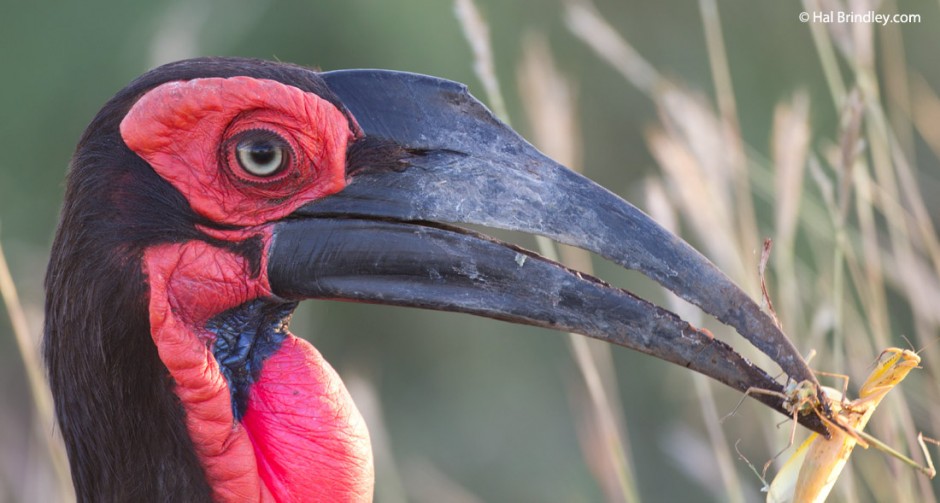
Be Late Returning To Camp. Each camp closes around sunset (somewhere between 5:30 and 6:30 PM depending on time of year) and you must be inside a camp before the gates close. Supposedly, you will pay a fine if you arrive late, but thankfully we have yet to confirm that fact. PLAN AHEAD.
Yes, it can be very frustrating when you find an awesome subject and and the sun is finally starting to set and you are getting perfect light, then you realize you have to be back in camp in 20 minutes. So make sure you are near camp in the evenings.
Don’t be one of those jerks who is driving at twice the speed limit at 5:45PM while trying to make it back to camp, and risking the lives of animals in the park just because they had to spend ten more minutes at a lion sighting. If you care about conserving the animals that you came all the way to see, plan ahead and don’t speed.
Also, some parks have speed traps and they will fine you.
Please, follow these rules and be aware of other general safari etiquette.
Camera Gear for a Safari
This is the safari camera gear we carry right now:
Camera Body: We have three bodies, being the Canon 80D our favorite as it performs really well at night. Plus it is not outrageously expensive. Make sure to bring lots of extra batteries.
Lenses: We carry an array of lenses, from a 500mm to a macro lens. We used to carry a 600mm but it was way too heavy and we sold it. Here is what we carry:
– Telephoto lens: We carry a 500 mm lens f/4-5.6L for great close ups.
– Mid-range lens: The 100-400mm f/4.5-5.6L is a great flexible lens if you want close ups and landscape. Definitely our favorite range.
– Standard zoom lens: This Canon 18-55 is our to go lens for landscapes that don’t require too much of a wide field.
– Wide angle lens: We use the Canon 10-22mm 3.5-4.5. It is great for landscape photos or photos of big groups of animals.
– Macro lens: We use a Venus Laowa 25mm 2.8. We use a Haven’t taken this one on a safari yet, but it will come with us next time. We’ve started photographing bugs and leaf/fungi patterns, and this lens gives great results for a great price.
-Portable External Drives: We carry two of Western Digital portable external drives.
African Safari Photography Tips
Lenses. You don’t have to have a huge lens on your SLR to get awesome photos while on your safari in Kruger. The animals are big and they come close. I often find myself cursing my long lenses because I can’t fit the animal in the frame. A medium length lens, say a 100-400mm zoom, is ideal.
Bring a wider lens for landscapes and the occasional close-up of interesting campground critters. If you don’t mind carrying expensive, heavy gear, bring your 500 or 600mm to get those great face closeups or smaller birds in the trees. A teleconverter, which multiplies the focal length of your lens, is also a cheaper and lighter-weight option to extend your reach.
Support. As mentioned in the “what to bring” section, a bean bag is the way to go. I made a little pouch out of the pant leg of a pair of jeans on my first visit to Africa and have used the same one on all three visits since then. When I arrive, I fill it with rice from the campground store, then plop it on the car window sill whenever I shoot. When I’m shooting video I sometimes try to prop a tripod inside the car door so I can pan smoothly, but it is always awkward. If you want to save weight and space, skip the tripod.
Hard Drive. I always carry two portable external hard drives to make two back-ups of my photos each day, via a laptop computer. We use Western Digital and you can get one of their portable external hard drive here. You will shoot LOTS of photos here. Instead of putting all your money into expensive memory cards, get a couple 500GB drives and back up daily. I use two drives because I’ve had a drive fail in the field before and data recovery is FAR more expensive than buying an extra drive.
Shoot Early and Late. The African sun can be pretty harsh at mid day. As always, your prettiest light is early morning and late evening.
Know Your Subjects. Bring a field guide or a behavior guide. We have a list of guides in this post here, but our favorite are The Behavior Guide to African Mammals and Birds of Southern Africa. Not only will you have more fun by learning about the animals you are watching, you will figure out where to find them, discover less-obvious traits that make for interesting closeup photos (like the pseudo-penis on a female hyena, read more about hyenas here), and be able to anticipate their behavior for really great shots.
Be Patient. If you find a great subject, stick with it. If you see a leopard and it is sleeping in a tree, stick it out. Everyone else will eventually get bored and disappear, leaving you with the sweet shot when she wakes up. (See our leaping leopard video here)
We hope this article gives you the information and, more importantly, the confidence you need to make your first South African Safari. You can do it!
If this article inspired you to go to Africa or it helped you as a guide, we want to hear about it. Please email us or leave a comment below.
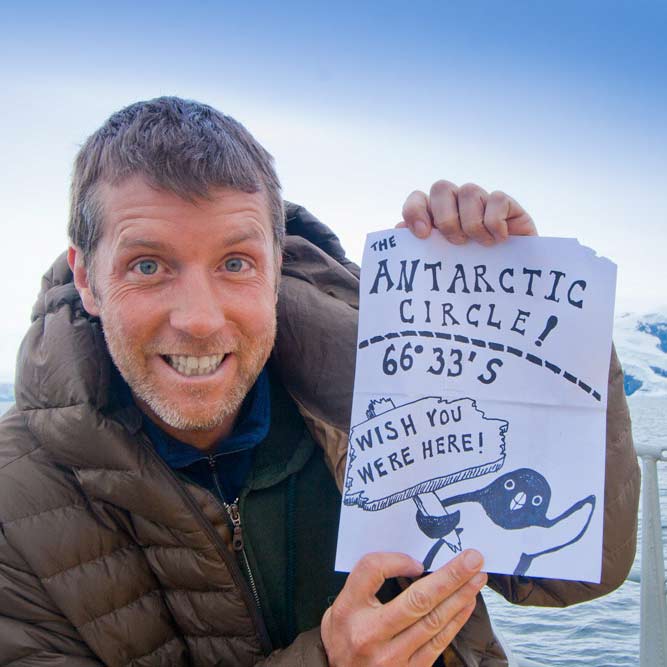
Hal Brindley
Brindley is an American conservation biologist, wildlife photographer, filmmaker, writer, and illustrator living in Asheville, NC. He studied black-footed cats in Namibia for his master’s research, has traveled to all seven continents, and loves native plant gardening. See more of his work at Travel for Wildlife, Truly Wild, Our Wild Yard, & Naturalist Studio.


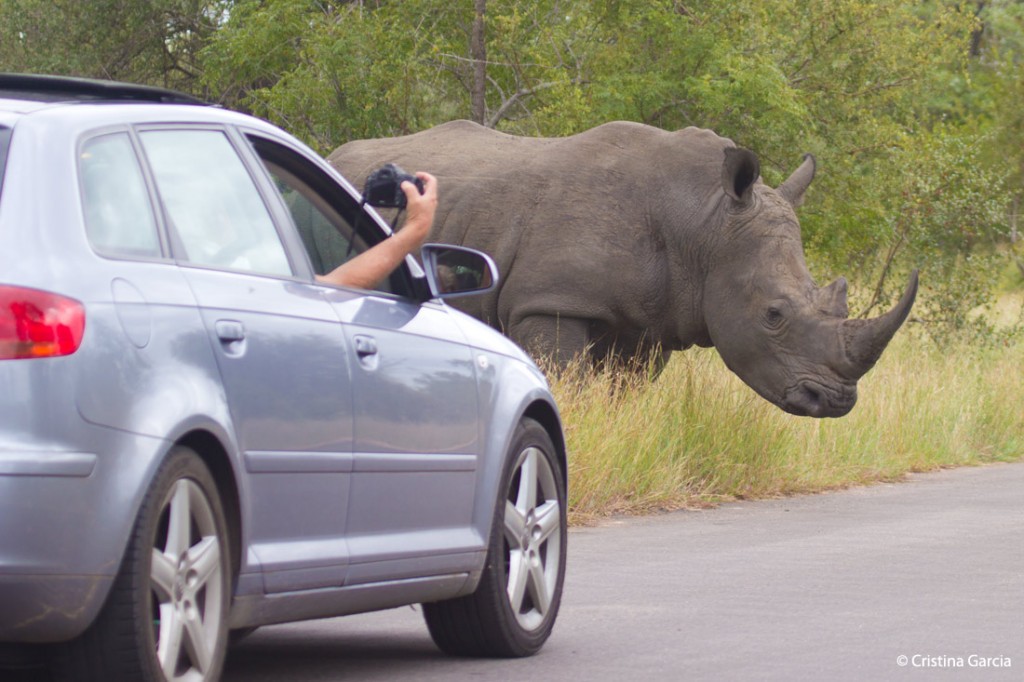
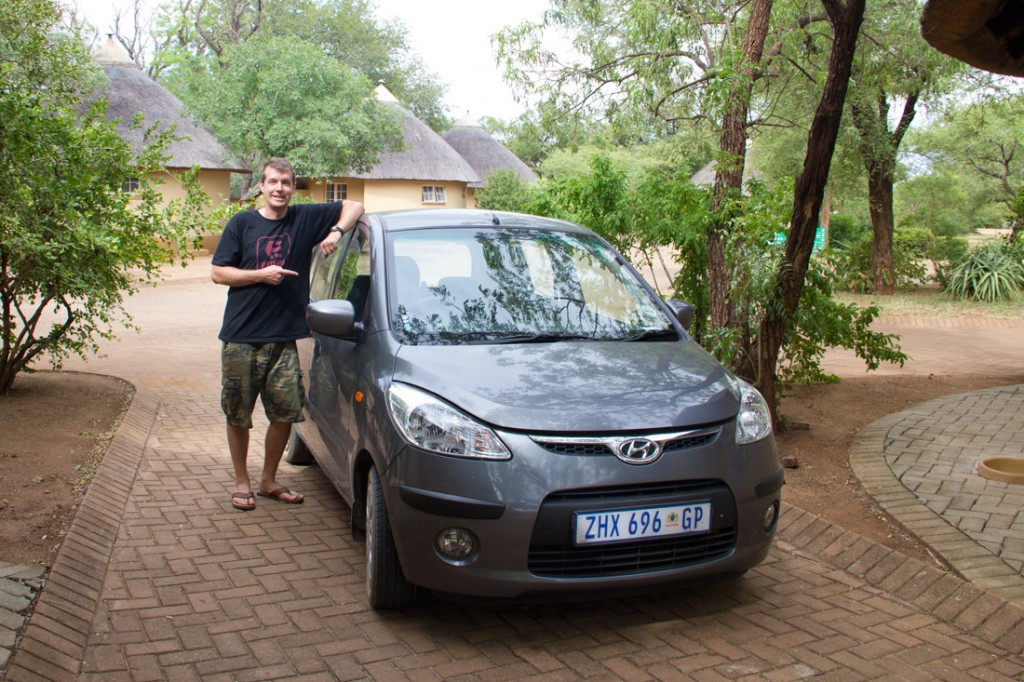

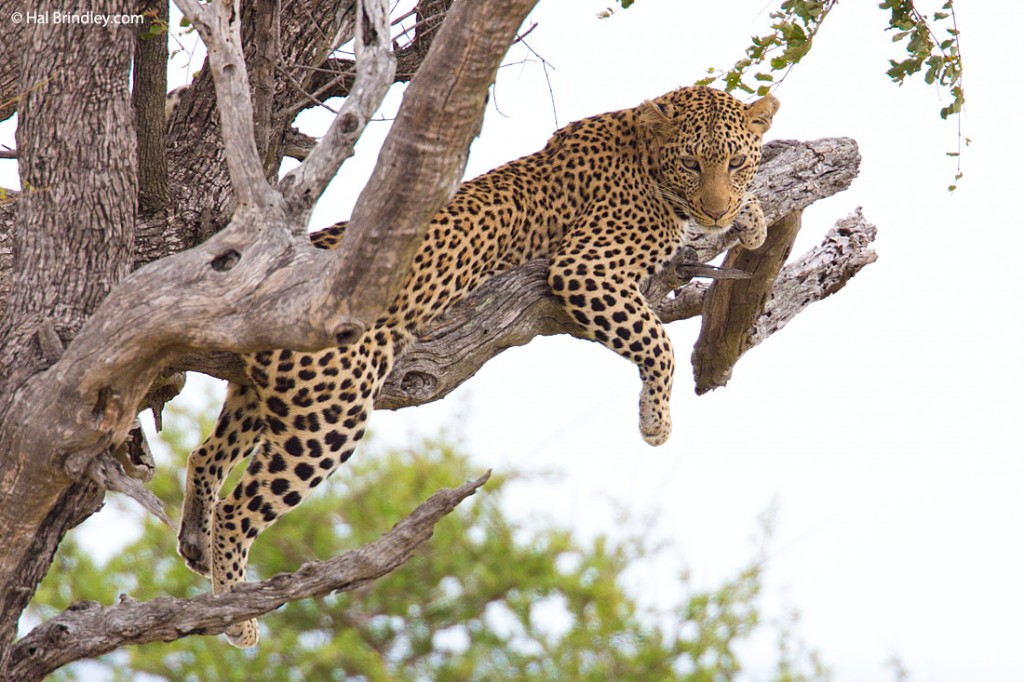

Bonnie M.
Monday 10th of April 2017
I used several of your tips when planning our first Kruger trip in 2015. Thank you for posting this! Your write up made me much more comfortable doing the trip by ourselves. Your camera bean bag tip really helped with our photography. The whole trip went so smoothly that I was able to convince my mom to go back with us in 2016. Thank you!
cristina garcia
Monday 1st of May 2017
That's fantastic! Thanks Bonnie!
Kenya Safaris
Monday 4th of April 2016
Very informative piece of article. Very helpful to those who would like to visit Africa
Raphael
Sunday 3rd of May 2015
Hi Hal, That's a great and very informative article. Everything on point and great tips on conservation. Hope you also visit Masai Mara in Kenya and write a similar article. Thank you so much.
Regards, Raphael Director- East African Exotic Safaris http://www.eaexoticsafaris.com
mike dale
Sunday 9th of June 2013
Hi Hal, Great information and site. Love the videos too. Question; Do you have any other recommended itineraries? I like the look of your 7 day one but i'm thinking of going for 10 days, possibly 14 days. Any suggestions? Mike
Hal Brindley
Wednesday 12th of June 2013
Hi Mike, Personally I would add a couple nights to Satara as that is a great central spot to access a variety of habitats. I would also consider spending two nights at each of the other camps instead of one so you're not setting up camp every night and packing it up every morning. It'll give you a chance to get out earlier in the mornings. If you're feeling wild and crazy, two weeks might be enough time to go to the top and back down again but you'd have to stay on the move the whole time. Sometimes it's more fun to relax and get to know a single area and learn the rhythms of the local creatures. The good news is, you'll have fun no matter what you decide to do. Please let us know how it goes! Thanks so much for reading, Hal
Alexandra
Wednesday 28th of November 2012
I hope to head to Africa in 2013! So these tips are just what I was looking for, I have already bookmarked it! Great write up!
Hal Brindley
Thursday 29th of November 2012
Hi Alexandra, glad you liked it. I hope it helps on your next African adventure! -Hal